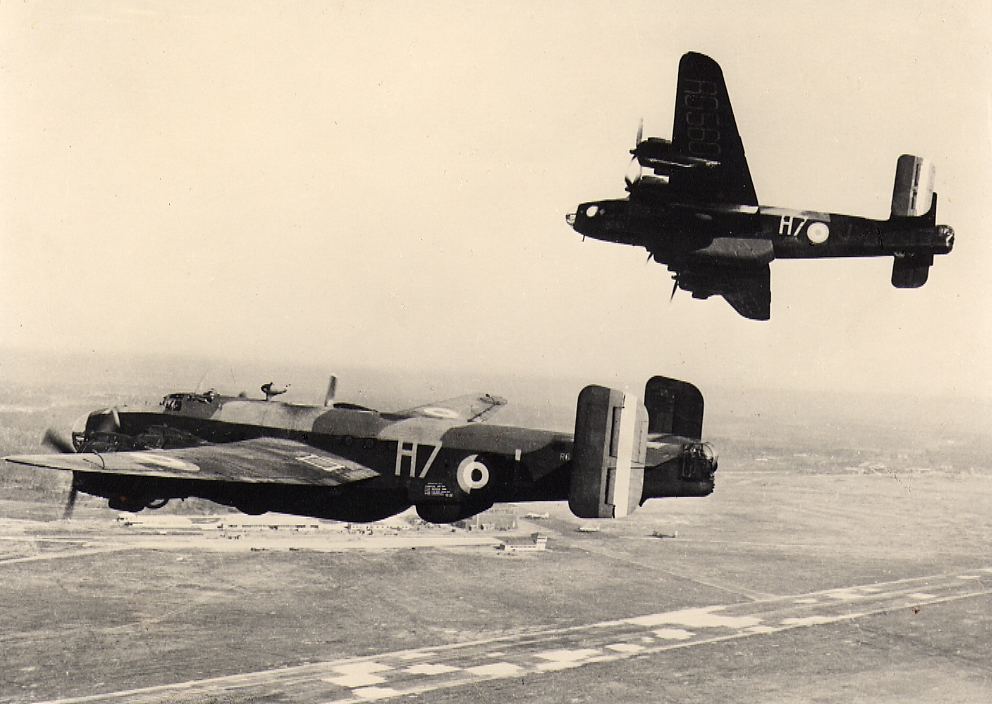It’s 1942 and the UK has already weathered the storm of the Battle of Britain and averted Operation Sealion. The country’s airfields are now ready for an all out assault on ‘Fortress Europe’.
There was one air base that was different from the rest though. RAF Elvington in Yorkshire was home to 77 Squadron RAF Bomber Command, who operated from here from October 1942 to April 1944. However, it also had some continental visitors during the war. On 16th May 1944, the base become home to two French Squadrons called 346 Guyenne and 347 Tunisie. Elvington was now the only station in Britain to be operated by another nationality.The French airmen arriving from North Africa were the remnants of the French Air Force, who were desperate to free their nation from the German invaders. The French contingent went on to fly 2,700 sorties deep into Nazi territory and both squadrons lost 15 aircraft each. RAF. Elvington became quite literally a French enclave, a foreign territory on Yorkshire soil and the only one of its kind in the United Kingdom.

Credit Yorkshire air Museum Archives.
Around 2,000 Frenchmen arrived including translators and mechanics as well as pilots. Many of the original aircrews were escapees, the remnants of the French Air Force Bomber Squadrons (Groupes Lourds) who had fled France across the Mediterranean to Algeria in 1940. Here they had joined forces with the Allies, undertook training and proved their spirit during 1943 in attacking Rommel’s retreating Afrika Korps.
Just two weeks after being formed, 346 Squadron were called into action on the night of 1st / 2nd June, 1944, in an operation directly in support of the imminent Normandy invasion of D-Day. 12 aircraft from the squadron helped make up the combined attack force of 110 bombers. The target was the strategically important radio station at Ferme d’Urville, near Cherbourg, which was completely destroyed. All 346 Squadron aircraft returned safely, one having returned early due to the failure of the Gee navigational aid. The aircraft commander, Capitaine Baron, had refused to bomb France if he could not be sure of being accurate.

Credit Yorkshire air Museum Archives.

Credit Yorkshire air Museum Archives.
As the raids progressed ever further into enemy territory the strains on aircraft and crews, caused by the long flights of over eight hours, made casualties inevitable. The first of these came on the night of 6th July 1944, when, returning from another successful mission, Halifax LK728 of 347 Tunisie Squadron, crashed near Thorne in East Yorkshire for unknown reasons. All the crew, under the command of Lieutenant Chapron, perished in the ensuing fire. the night of 4th / 5th November 1944, will forever be burnt on the memories of those that survived the war. On that fateful night, 27 aircraft from Elvington joined the attack on the important steel producing town of Bochum, deep in the heart of the Ruhr, the infamous ‘Happy Valley’. The aircraft from Guyenne Squadron are in the final wave, the most vulnerable to interception by night intruders, and the price is heavy. By the end of Commandant Puget’s longest night, 5 aircraft and 35 men, friends, are missing. He had not rested from the moment the briefing started to the time when it was clear that no more aircraft were to return.
Although the missions were carried out in Europe, RAF Elvington was still at threat from Luftwaffe night intruders. On one such occasion, a Junkers Ju 88 attacked the airfield before crashing into nearby Dunnington Lodge, killing the whole crew. A black cross now marks the location. Perhaps the most famous mission the 346 Guyenne and 347 Tunisie undertook was the assault on the gun batteries at Wangerooge. The two continental squadrons left for Bordeaux in October 1945, the war over and their job done.


So, how can the contribution of the two French squadrons eventual outcome of the war be summed up? The answer possibly lies in the message sent to Elvington from Bomber Command Headquarters, shortly after the German surrender.
“Please convey to all French personnel who have served in Bomber Command, my admiration and gratitude for their unfailing co-operation, their outstanding gallantry and efficiency. To all those brave Frenchmen who carried on the fight in our ranks, the warmest salutations of Bomber Command.”


Credit Yorkshire air Museum Archives.
